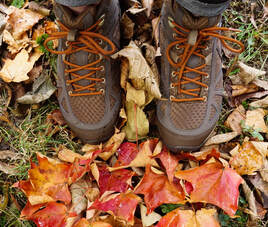 Escape. That's what I'd like to do. Leave all this frightening virus stuff behind. Luckily, escape from stress and worry, for me, usually involves spending time in nature. It's a balm that rarely fails to help. It brings fresh air, some exercise, and a place to clear my head, to enjoy nature's surroundings, listen to the birds calling, wild beauty and peace. During these strange days of Covid-19, as we stay home, and social distance, in an effort to stem the tide of this malicious disease, we must find ways to stay healthy, stay positive, refreshed. For me, that means getting outside. We can social distance in the outdoors. There is an abundance of green space in South Eastern Wisconsin. Plenty for everyone. Keeping in mind that most indoor facilities are closed, we can still get out on the trails, no matter long or short, for a hike. The Park Next Door has location listings from Milwaukee, and the surrounding 90-mile radius. From Milwaukee County Parks, to Nature Conservancy sites, State Parks, and regional parks from Milwaukee to Madison, to Horicon, to Sheboygan, to Kenosha, to West Bend, and more. Following is a quick visual list of some of my family friendly favorites. Click on the images for further information, and be sure to stay informed of any changes in park access status. And if all else fails, take in some sunshine in your garden, on your patio, your balcony, or the front steps. Stay safe, everyone.
0 Comments
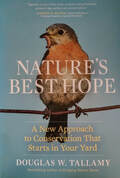 NATURE'S BEST HOPE - Douglas W. Tallamy NATURE'S BEST HOPE - Douglas W. Tallamy Spring has arrived here in Wisconsin, and I'm anxious to see what's going to rise up in the garden in the coming days. We planted several new native plants last summer, and I'm hoping they come back strong this season. When we decided to pursue creating habitat in our yard and garden for wildlife, we knew it would be essential to include native plants. Even so, I felt like I needed to know more. So, I've been reading books about it. Books about saving our birds, and our bees, and the bugs, and the earth. One recent book, NATURE'S BEST HOPE, by Douglas W. Tallamy, was eye-opening, and, actually encouraging. Tallamy's overall message is that we can mitigate a lot of the natural crises of our time, the loss of pollinators (bees and butterflies), birds, and more, by creating native plant habitat in our yards, both front and back. By incorporating native trees, shrubs, and plants, we can help to sustain the natural world by increasing the overall wild space collectively with our neighbors, instead of leaving it solely to nature preserves, parks, and wildlife areas. Obviously, those green spaces are essential, but our own gardens can create a corridor between those spaces that doesn't currently exist. Tallamy gives a great deal of background in the book, explaining the ecological chain of plants, trees, insects, birds and other animals. Plants native to our local environment provide better food and nutrients to the insects, that, in turn, become a plentiful food source for birds and other animals. Non-native plants (plants imported from other countries and environments), may grow fine in our yards, but they do not provide the sustenance needed, though they might in their original habitat. A popular example of this would be planting for Monarch butterflies. In recent years, there has been a strong push by gardeners of all walks of life, to help shore up the declining population (down 90% since 1992) of Monarch butterflies. By planting native Milkweed, we supply the only appropriate plant to feed the Monarch caterpillar. Once it has become a butterfly, it can feed on other native plants such as: Coneflower, Bee Balm, Sunflowers, Daisies, Asters, Phlox and more. Hence, the recent popularity of butterfly gardens, which are beautiful, and prove beneficial to other insects and animals as well. One of the things I like about Tallamy's proposition, is that you can contribute to this solution no matter where you live: rural, city, suburb. You can plant a native garden in pots on a little balcony, you can increase habitat in the smallest of yards just by planting a tree, by skipping the use of pesticides, by reducing the size of your lawn by including native plants in your landscape. Suburban yards often have more space, and more opportunity to include native plants and trees in the landscape and garden. Native plants and trees can be used in the landscaping of office buildings, college campuses, even in shopping center parking lots. The idea is to create a thoroughfare for wildlife. The prospect, as Tallamy explains, doesn't have to be overwhelming. Start simple: stop using pesticides, add a native tree or shrub to your landscape. Incorporate a few native plants into your garden. Substitute native ground cover for some of your lawn. Then build from there, one bit at a time. As a birder, I have noticed the sad decline of wild birds over the past ten years. Tallamy's book has renewed my hope that we can help the plight of declining birds, bees, and butterflies, by embracing the use of native plants, trees, and shrubs. This spring migration season, listen for the birdsong in your neighborhood. Relish it. Then plant some natives in your green space, and know you play in part in their return next year, too. NATURE'S BEST HOPE by Douglas W. Tallamy, Timber Press For a list of native plants in your region, visit the National Wildlife Federation Plant Finder Website at: https://www.nwf.org/NativePlantFinder/ |
AuthorA nature lover, bird watcher, wildlife fan, amateur photographer, humane gardener, traveler, and singer of songs. I've been keeping closer to home these days, and truly discovering the beauty that lies in TheParkNextDoor. Archives
May 2024
Categories |
- Home
- THE MAGAZINE
- Celebrating 10 Years
- Blog
- Support The Park Next Door
- Achievements / Press
- Art for Your Walls & More
-
Special Features
- What's New
- Blooms Galore 2024: U-Pick Sunflowers, Cut Flowers and Lavender Fields
- Peony Perfection
- 30 Easy, Scenic Nature Walks
- Gone Fishing
- Birding Local
- A Walk On The Beach
- On The Bookshelf
- There's A Camera In My Pocket
- It's Garden Party Time
- Exploring Door County
- Tasting Door County
- Local Waterfalls Are Calling
- On The Side
- Beauty On The Escarpment
- Sacred Ground & Effigy Mounds Of Wisconsin
- Legacies Of Nature
- Escape To The Woods
- Snapshots
- Migration Song - The Magic of Bird Migration
- Dog Days In The Park
- Fabulous In Fall
- Gift Ideas For The Nature Lover
- Hiking Safely During Hunting Season - 2023 Edition
- Sparkle In The Parks & More
- Winter in Wisconsin
-
Let's Explore
-
Nature Trails
>
- 116th Street - Oak Leaf Trail - West Allis, WI
- Bald Bluff Nature Trail - Palmyra, WI
- Belle Reynolds Nature Trail - Oakfield, WI
- Eagle Nature Trail - Eagle, WI
- Emma Carlin Trail - Palmyra, WI
- Glacial Drumlin State Trail - Lake Mills, WI
- Ice Age Visitor Center Nature Trail - Campbellsport, WI
- Kettle Moraine Low Prairie Natural Area - Eagle, WI
- W. Kinnickinnic River Parkway - Milwaukee, WI
- Kohl Park Hiking Trail - Milwaukee, WI
- Paradise Springs Nature Trail - Eagle, WI
- Rice Lake Nature Trail - Whitewater, WI
- Scuppernong Springs Nature Trail - Eagle, WI
- Seminary Woods - St. Francis, WI
- Stony Ridge Nature Trail - Eagle, WI
- Stute Springs Nature Trail - Eagle, WI
- Washington Avenue Nature Trail - Sheboygan, WI
- White River State Trail - Elkhorn to Dover, WI
- Wisconsin Veteran's Memorial Riverwalk - Delafield, WI
-
Local Parks
>
- Akakawaa Park - Waukesha, WI
- Alt Bauer Park - Germantown, WI
- Anclam Park - Baileys Harbor, WI
- Astico County Park - Columbus, WI
- Asylum Point Park & Lighthouse - Oshkosh, WI
- Aurelian Springs Village Park - Palmyra, WI
- Beckman Mill County Park - Beloit, WI
- Big Hill Park - Beloit, WI
- Biwer Park - New Berlin, WI
- Bluhm Farm Park - Muskego, WI
- Brown Deer Park - Brown Deer, WI
- Calhoun Park - New Berlin, WI
- Carlin-Weld Park - Palmyra, WI
- Dorothy Carnes Park - Fort Atkinson, WI
- Carver-Roehl County Park - Clinton, WI
- Case Eagle Park - Burlington, WI
- Cave Point County Park - Sturgeon Bay, WI
- Cherney Maribel Caves County Park - Maribel, WI
- Cliffside Park - Caledonia, WI
- Copernicus Park - Milwaukee, WI
- Creekwood Park - Greenfield, WI
- Cudahy Woods - Cudahy, WI
- Denoon Park - Muskego, WI
- Dousman Stagecoach Inn Museum - Brookfield, WI
- Downtown Waupaca Parks - Waupaca, WI
- Doyne Park - Milwaukee, WI
- Ellison Bay Bluff County Park - Ellison Bay, WI
- Elm Grove Village Park - Elm Grove, WI
- Endicott Park - Brookfield, WI
- Estabrook Park - Milwaukee, WI
- Euclid Park - Milwaukee, WI
- Falk Park - Oak Creek, WI
- Frame Park - Waukesha, WI
- Franklin Woods - Franklin, WI
- Froemming Park - Franklin, WI
- Frontier Park - Butler, WI
- George K. Pinney County Park - Sturgeon Bay, WI -
- Glacier Hills County Park - Hubertus, WI
- Grant Park - South Milwaukee
- Greenfield Park - West Allis
- Grobschmidt Park - Milwaukee, WI
- Hales Corners Park, Ben Hunt Prairie and Cabin, Seneca Hale Summer Kitchen, Cobb Park - Hales Corners, WI
- Harnischfeger Park - Ixonia, WI
- Hart Park - Wauwatosa, WI
- Hartbrook Park - Hartland, WI
- Hartung Park - Wauwatosa, WI
- Hidden Lake Park - Brookfield, WI
- High Grove Park - New Berlin, WI
- Hika Bay Park - Cleveland, WI
- Hobbs Woods Nature Area - Fond Du Lac, WI
- Homestead Hollow County Park - Germantown, WI
- Honey Creek Park - West Allis, WI
- Hoyt Park - Wauwatosa, WI
- Humboldt Park - Milwaukee, WI
- Idle Isle Park - Muskego, WI
- Indian Mounds County Park - Lake Koshkonong Effigy Mounds and Trail - Fort Atkinson, WI
- Indianhead Park - Mukwonago, WI
- Jackson Park - Milwaukee, WI
- Jacobus Park - Wauwatosa, WI
- Johnstone Park - Oak Creek, WI
- Kelly Lake Park - New Berlin, WI
- Kiekhaefer Park - Fond du Lac, WI
- Kinsey Park - Brookfield, WI
- H.C. Koepp Village Park - Pewaukee, WI
- Konkel Park - Greenfield, WI
- Korth Park - Lake Mills, WI
- Krueger Park - Brookfield, WI
- Kurth Park - Muskego, WI
- Alan Kulwicki Park - Greenfield, WI
- Ledge County Park - Horicon, WI
- Lime Kiln Park - Grafton, WI
- Lime Kiln Park - Menomonee Falls, WI
- Lincoln Park - Glendale, WI
- Lions Legend Park I & II - Franklin, WI
- Lion's Park - New Berlin, WI
- Lisbon Community Park - Hartland, WI
- Lyons Park - Milwaukee, WI
- Magnolia Bluff County Park - Evansville, WI
- Malone Park - New Berlin, WI
- Manchester Hill Park - Muskego, WI
- Mangan Woods - Greendale, WI
- Mary Knoll Park - Brookfield, WI
- McCarty Park - West Allis, WI
- Mitchell Park - Brookfield, WI
- Monarch Trail / County Grounds Park - Milwaukee, WI
- Moorewood Park - Waukesha, WI
- Moorland Park - Muskego, WI
- Mound Zion Park - Brookfield, WI
- John Muir Memorial County Park - Town of Buffalo, WI
- Mukwonago Park - Mukwonago, WI
- Mush Ko Se Day Park - Fort Atkinson, WI
- Muskego Boardwalk Nature Trail - Muskego, WI
- Muskego Park - Muskego, WI
- Nashotah Park - Nashotah, WI
- Natureland County Park - Whitewater, WI
- New Berlin Historical Park - New Berlin, WI
- Nitschke Mounds County Park - Burnett, WI
- Nixon Park - Hartland, WI
- North Point Park - Sheboygan, WI
- Oerding Park - Oconomowoc, WI
- Petrifying Springs Park - Kenosha, WI
- Picnic Point Park - Oshkosh, WI
- Pleasant Valley Parks & Trails - Town of Cedarburg, WI
- Pondview Park - Greenfield, WI
- Prairie Springs Park - Pleasant Prairie, WI
- ProHealth Care Park - New Berlin, WI
- Pulaski Park - Milwaukee, WI
- Richfield Historical Park - Richfield, WI
- Ridge Run Park - West Bend, WI
- Rivers Edge Park - Menomonee Falls, WI
- Riverside Park - Watertown, WI
- Riverside Park - West Bend, WI
- Rock River Heritage County Park - Janesville, WI
- Rotary Park - Menomonee Falls, WI
- Sandy Knoll County Park - Town of Trenton, WI
- Saveland Park - Milwaukee, WI
- Schoen Laufen Park - Germantown, WI
- Schoetz Park - Village of Hales Corners, WI
- Schoolhouse Beach - Washington Island, WI
- Scout Lake Park - Greendale, WI
- Sheboygan Indian Mound Park - Sheboygan, WI
- Simmons Woods Park - Pewaukee, WI
- South Shore Park - Bayview, WI
- Spassland Park - Germantown, WI
- Springs Park - Delavan, WI
- Sunset Beach County Park - Sturgeon Bay, WI
- Swan Park - Beaver Dam, WI
- Three Bridges Park - Milwaukee, WI
- Turtle Creek Parkway / Tiffany Bridge - Clinton, WI
- Tyranena Park - Lake Mills, WI
- Valley View Park - New Berlin, WI
- Veterans Memorial Park - Grafton, WI
- Viking County Park - Stoughton, WI
- Virmond Park - Mequon, WI
- Warnimont Park - Cudahy, WI
- Washington Park - Milwaukee, WI
- Weatherstone Park - New Berlin, WI
- Wequiock Falls Park - Green Bay, WI
- Weston Antique Apple Orchard & Isabelle Weston Memorial Trail - New Berlin, WI
- White River County Park - Walworth County
- Whitnall Park - Franklin, WI
- Wilson Park - Milwaukee, WI
- Wind Point Lighthouse - Racine, WI
- Ken Windl Park - Franklin, WI
- Xenobia Springs Park - Palmyra, WI
-
Nature Preserves
>
- Adam Birding Conservancy - Whitewater, WI
- Badertscher Preserve - Muskego, WI
- Joyce M. Baer & George J. Socha Conservancy - Marshall, WI
- Bay Beach Wildlife Sanctuary - Green Bay, WI
- Beulah Bluff Preserve - East Troy, WI
- Beulah Bog - East Troy, WI
- Blue Heron Wildlife Sanctuary - Saukville, WI
- Bratt Woods - Grafton, WI
- Burlington School Forest - Burlington, WI
- Calhoun Creek Prairie - New Berlin, WI
- Cedarburg Bog - Saukville, WI
- Chiwaukee Prairie - Kenosha, WI
- Conservancy For Healing And Heritage - Franklin, WI
- Robert O Cook Arboretum - Janesville, WI
- Crooked Creek Nature Preserve - East Troy, WI
- Crossroads At Big Creek - Sturgeon Bay
- Deer Creek Sanctuary - New Berlin, WI
- Delavan Memorial Arboretum - Delavan, WI
- Donges Bay Gorge - Mequon, WI
- Emerald Preserve - Oak Creek, WI
- Engel Conservation Area - Muskego, WI
- Faville Grove Sanctuary - Lake Mills, WI
- Fellenz Woods - West Bend, WI
- Flowing Well - Whitewater, WI
- Forest Beach Migratory Preserve - Port Washington, WI
- Forest Exploration Center - Wauwatosa, WI
- Fox River Sanctuary - Waukesha, WI
- John S. Garman Nature Preserve - Waterloo, WI
- Garrison's Glen - Mequon, WI
- Genesee Oak Opening and Fen - Mukwonago, North Prairie WI
- Gordon Tabor Memorial Woods - Caledonia, WI
- Gottfried Prairie and Arboretum - Fond du Lac, WI
- Grasslyn Nature Preserve - Mequon, WI
- Greenway Arboretum - Fond du Lac, WI
- Grootemaat Nature Preserve - Greendale, WI
- Hartland Marsh Preserve - Village of Hartland, WI
- Hawthorn Glen - Milwaukee, WI
- Hawthorn Hollow Nature Sanctuary and Arboretum - Kenosha, WI
- Hildebrand Nature Conservancy - Village of Fontana-On-Geneva Lake, WI
- Horicon Marsh State Wildlife Area - Horicon, WI
- Huiras Lake Natural Area - Fredonia, WI
- Kishwauketoe Nature Conservancy - Williams Bay, WI
- Kurtz Woods State Natural Area - Grafton, WI
- Lac Lawrann Conservancy - West Bend, WI
- Lakeshore Nature Preserve - Madison, WI
- Ledge View Nature Center - Chilton, WI
- Lion's Den Nature Preserve - Grafton, WI
- Lois Jensen Nature Preserve - Delafield, WI
- Lulu Lake Nature Preserve - East Troy, WI
- John Margis Jr. Wildlife Area - Burlington, WI
- Maywood Environmental Park - Sheboygan, WI
- Jean McGraw Memorial Nature Preserve - Kenosha, WI
- Mequon Nature Preserve - Mequon, WI
- Moely Prairie - Prairie Du Sac, WI
- Nature Hill Nature Center - Oconomowoc, WI
- Ned Hollister Wetlands Conservancy - Delavan, WI
- Newell and Ann Meyer Nature Preservel - Eagle, WI
- Nicholson Wildlife Refuge - Franksville, WI
- Oakfield Ledge State Natural Area - Oakfield, WI
- Oconomowoc River Conservancy Park - Merton, WI
- Parry Spring - Dousman, WI
- Pavcek Preserve - Hartford, WI
- Petersen Island Woods Preserve - Elkhorn, WI
- Pheasant Branch Creek Conservancy - Middleton, WI
- Pickerel Lake Fen Preserve - East Troy, WI
- Pope Farm Conservancy - Verona, WI
- Price Park Conservancy - Elkhorn, WI
- Pukaite Woods Nature Preserve / Mequon Rotary Park - Mequon, WI
- Retzer Nature Center - Waukesha, WI
- The Ridges Sanctuary - Baileys Harbor, WI
- River Bend Nature Center - Racine, WI
- Riveredge Nature Center - Saukville, WI
- Helen Rohner Children's Fishing Park - Williams Bay, WI-
- Saller Woods - Rochester, WI
- Sanctuary Woods - Wauwatosa, WI
- Sauk Creek Nature Preserve - Port Washington, WI
- Schlitz Audubon Nature Center - Milwaukee, WI
- Schmeekle Reserve - Stevens Point, WI
- Seno Woodland Center - Burlington, WI
- Spirit Lake Nature Preserve - Mequon, WI
- Spruce Lake Bog - Campbellsport, WI
- Stigler Nature Preserve - New Berlin, WI
- Trinity Creek Wetland Habitat - Mequon, WI
- UW-Waukesha Field Station - Oconomowoc, WI
- Van der Brohe Arboretum - Two Rivers, WI
- Vernon Marsh Wildlife Area - Mukwonago, WI
- Vernon Wildlife Area - Waterford, WI
- Wadewitz Nature Camp - Village of Rochester, WI
- Wehmhoff Woodland Preserve - Burlington, WI
- Wehr Nature Center - Franklin, WI
- Whitnall School Forest - Greenfield, WI
- Woodland Dunes Nature Center & Preserve - Two Rivers, WI
- Zeloski Marsh - Cambridge, WI
-
State Parks
>
- Aztalan State Park - Aztalan, WI
- Baxter's Hollow State Natural Area - Sauk City, WI
- Big Foot Beach State Park - Lake Geneva, WI
- Bong State Recreation Area - Kansasville, WI
- C. D. Besadny Fish and Wildlife Area - Kewaunee, WI
- Cadiz Springs State Recreation Area - New Glarus, WI
- Devil's Lake State Park - Baraboo, WI
- Harrington Beach State Park - Belgium, WI
- Hartman Creek State Park - Waupaca, WI
- Havenwoods State Forest - Milwaukee, WI
- High Cliff State Park - Sherwood, WI
- Kohler-Andrae State Park - Sheboygan, WI
- La Budde State Natural Area - Ice Age Trail Segment - Plymouth, WI
- Lake Kegonsa State Park - Stoughton, WI
- Lakeshore State Park - Milwaukee, WI
- Lapham Peak State Park - Delafield, WI
- Lizard Mound State Park - Farmington, WI
- Mauthe Lake State Recreation Area - Campbellsport, WI
- Mukwonago River Unit of the Kettle Moraine State Forest - Mukwonago, WI
- Natural Bridge State Park - North Freedom, WI
- Newport State Park - Ellison Bay, WI
- Peninsula State Park - Fish Creek, WI
- Pike Lake State Park - Hartford, WI
- Point Beach State Forest - Two Rivers, WI
- Potawatomi State Park - Sturgeon Bay, WI
-
Sculpture Gardens and Conservancies
>
- Bobrowitz Sculpture Garden - Colgate, WI
- Boerner Botanical Gardens - Hales Corners, WI
- Nick Engelbert's Grandview - Hollandale, WI
- Franconia Sculpture Park - Shafer, MN
- The Garden Door - Sturgeon Bay, WI
- Greendale Children's Garden - Greendale, WI
- Labyrinth Garden Earth Sculpture - West Bend, WI
- Margie's Garden - Hales Corners, WI
- Mitchell Park Horticultural Conservancy - Milwaukee, WI
- New Life Lavender & Cherry Farm - Baraboo, WI
- Olbrich Botanical Gardens - Madison, WI
- M. Schettl Sales - Sculpture and Oddities
- Rotary Botanical Gardens - Janesville, WI
- Sisson's Peony Garden - Rosendale, WI
- Stavkirke - Washington Island, WI
- Stevens Point Sculpture Park - Stevens Point, WI
- James Tellen Woodland Sculpture Garden - Town of Wilson, WI
- West Of The Lake Gardens - Manitowoc, WI
- Yerkes Observatory - Williams Bay, WI
-
Cemeteries
>
- Calvary Cemetery - Milwaukee, WI
- Forest Home Cemetery - Milwaukee, WI
- Highland Memorial Park Cemetery - New Berlin, WI
- La Belle Cemetery - Oconomowoc, WI
- Mount Olivet Cemetery - Milwaukee, WI
- New Berlin Center Cemetery - New Berlin, WI
- Oak Hill Cemetery - Lake Geneva, WI
- Riverside Cemetery - Oshkosh, WI
- St. Adalbert Cemetery - Milwaukee, WI
-
Nature Trails
>
- Gardening for Wildlife
- Detours, Links & More
- Home
- THE MAGAZINE
- Celebrating 10 Years
- Blog
- Support The Park Next Door
- Achievements / Press
- Art for Your Walls & More
-
Special Features
- What's New
- Blooms Galore 2024: U-Pick Sunflowers, Cut Flowers and Lavender Fields
- Peony Perfection
- 30 Easy, Scenic Nature Walks
- Gone Fishing
- Birding Local
- A Walk On The Beach
- On The Bookshelf
- There's A Camera In My Pocket
- It's Garden Party Time
- Exploring Door County
- Tasting Door County
- Local Waterfalls Are Calling
- On The Side
- Beauty On The Escarpment
- Sacred Ground & Effigy Mounds Of Wisconsin
- Legacies Of Nature
- Escape To The Woods
- Snapshots
- Migration Song - The Magic of Bird Migration
- Dog Days In The Park
- Fabulous In Fall
- Gift Ideas For The Nature Lover
- Hiking Safely During Hunting Season - 2023 Edition
- Sparkle In The Parks & More
- Winter in Wisconsin
-
Let's Explore
-
Nature Trails
>
- 116th Street - Oak Leaf Trail - West Allis, WI
- Bald Bluff Nature Trail - Palmyra, WI
- Belle Reynolds Nature Trail - Oakfield, WI
- Eagle Nature Trail - Eagle, WI
- Emma Carlin Trail - Palmyra, WI
- Glacial Drumlin State Trail - Lake Mills, WI
- Ice Age Visitor Center Nature Trail - Campbellsport, WI
- Kettle Moraine Low Prairie Natural Area - Eagle, WI
- W. Kinnickinnic River Parkway - Milwaukee, WI
- Kohl Park Hiking Trail - Milwaukee, WI
- Paradise Springs Nature Trail - Eagle, WI
- Rice Lake Nature Trail - Whitewater, WI
- Scuppernong Springs Nature Trail - Eagle, WI
- Seminary Woods - St. Francis, WI
- Stony Ridge Nature Trail - Eagle, WI
- Stute Springs Nature Trail - Eagle, WI
- Washington Avenue Nature Trail - Sheboygan, WI
- White River State Trail - Elkhorn to Dover, WI
- Wisconsin Veteran's Memorial Riverwalk - Delafield, WI
-
Local Parks
>
- Akakawaa Park - Waukesha, WI
- Alt Bauer Park - Germantown, WI
- Anclam Park - Baileys Harbor, WI
- Astico County Park - Columbus, WI
- Asylum Point Park & Lighthouse - Oshkosh, WI
- Aurelian Springs Village Park - Palmyra, WI
- Beckman Mill County Park - Beloit, WI
- Big Hill Park - Beloit, WI
- Biwer Park - New Berlin, WI
- Bluhm Farm Park - Muskego, WI
- Brown Deer Park - Brown Deer, WI
- Calhoun Park - New Berlin, WI
- Carlin-Weld Park - Palmyra, WI
- Dorothy Carnes Park - Fort Atkinson, WI
- Carver-Roehl County Park - Clinton, WI
- Case Eagle Park - Burlington, WI
- Cave Point County Park - Sturgeon Bay, WI
- Cherney Maribel Caves County Park - Maribel, WI
- Cliffside Park - Caledonia, WI
- Copernicus Park - Milwaukee, WI
- Creekwood Park - Greenfield, WI
- Cudahy Woods - Cudahy, WI
- Denoon Park - Muskego, WI
- Dousman Stagecoach Inn Museum - Brookfield, WI
- Downtown Waupaca Parks - Waupaca, WI
- Doyne Park - Milwaukee, WI
- Ellison Bay Bluff County Park - Ellison Bay, WI
- Elm Grove Village Park - Elm Grove, WI
- Endicott Park - Brookfield, WI
- Estabrook Park - Milwaukee, WI
- Euclid Park - Milwaukee, WI
- Falk Park - Oak Creek, WI
- Frame Park - Waukesha, WI
- Franklin Woods - Franklin, WI
- Froemming Park - Franklin, WI
- Frontier Park - Butler, WI
- George K. Pinney County Park - Sturgeon Bay, WI -
- Glacier Hills County Park - Hubertus, WI
- Grant Park - South Milwaukee
- Greenfield Park - West Allis
- Grobschmidt Park - Milwaukee, WI
- Hales Corners Park, Ben Hunt Prairie and Cabin, Seneca Hale Summer Kitchen, Cobb Park - Hales Corners, WI
- Harnischfeger Park - Ixonia, WI
- Hart Park - Wauwatosa, WI
- Hartbrook Park - Hartland, WI
- Hartung Park - Wauwatosa, WI
- Hidden Lake Park - Brookfield, WI
- High Grove Park - New Berlin, WI
- Hika Bay Park - Cleveland, WI
- Hobbs Woods Nature Area - Fond Du Lac, WI
- Homestead Hollow County Park - Germantown, WI
- Honey Creek Park - West Allis, WI
- Hoyt Park - Wauwatosa, WI
- Humboldt Park - Milwaukee, WI
- Idle Isle Park - Muskego, WI
- Indian Mounds County Park - Lake Koshkonong Effigy Mounds and Trail - Fort Atkinson, WI
- Indianhead Park - Mukwonago, WI
- Jackson Park - Milwaukee, WI
- Jacobus Park - Wauwatosa, WI
- Johnstone Park - Oak Creek, WI
- Kelly Lake Park - New Berlin, WI
- Kiekhaefer Park - Fond du Lac, WI
- Kinsey Park - Brookfield, WI
- H.C. Koepp Village Park - Pewaukee, WI
- Konkel Park - Greenfield, WI
- Korth Park - Lake Mills, WI
- Krueger Park - Brookfield, WI
- Kurth Park - Muskego, WI
- Alan Kulwicki Park - Greenfield, WI
- Ledge County Park - Horicon, WI
- Lime Kiln Park - Grafton, WI
- Lime Kiln Park - Menomonee Falls, WI
- Lincoln Park - Glendale, WI
- Lions Legend Park I & II - Franklin, WI
- Lion's Park - New Berlin, WI
- Lisbon Community Park - Hartland, WI
- Lyons Park - Milwaukee, WI
- Magnolia Bluff County Park - Evansville, WI
- Malone Park - New Berlin, WI
- Manchester Hill Park - Muskego, WI
- Mangan Woods - Greendale, WI
- Mary Knoll Park - Brookfield, WI
- McCarty Park - West Allis, WI
- Mitchell Park - Brookfield, WI
- Monarch Trail / County Grounds Park - Milwaukee, WI
- Moorewood Park - Waukesha, WI
- Moorland Park - Muskego, WI
- Mound Zion Park - Brookfield, WI
- John Muir Memorial County Park - Town of Buffalo, WI
- Mukwonago Park - Mukwonago, WI
- Mush Ko Se Day Park - Fort Atkinson, WI
- Muskego Boardwalk Nature Trail - Muskego, WI
- Muskego Park - Muskego, WI
- Nashotah Park - Nashotah, WI
- Natureland County Park - Whitewater, WI
- New Berlin Historical Park - New Berlin, WI
- Nitschke Mounds County Park - Burnett, WI
- Nixon Park - Hartland, WI
- North Point Park - Sheboygan, WI
- Oerding Park - Oconomowoc, WI
- Petrifying Springs Park - Kenosha, WI
- Picnic Point Park - Oshkosh, WI
- Pleasant Valley Parks & Trails - Town of Cedarburg, WI
- Pondview Park - Greenfield, WI
- Prairie Springs Park - Pleasant Prairie, WI
- ProHealth Care Park - New Berlin, WI
- Pulaski Park - Milwaukee, WI
- Richfield Historical Park - Richfield, WI
- Ridge Run Park - West Bend, WI
- Rivers Edge Park - Menomonee Falls, WI
- Riverside Park - Watertown, WI
- Riverside Park - West Bend, WI
- Rock River Heritage County Park - Janesville, WI
- Rotary Park - Menomonee Falls, WI
- Sandy Knoll County Park - Town of Trenton, WI
- Saveland Park - Milwaukee, WI
- Schoen Laufen Park - Germantown, WI
- Schoetz Park - Village of Hales Corners, WI
- Schoolhouse Beach - Washington Island, WI
- Scout Lake Park - Greendale, WI
- Sheboygan Indian Mound Park - Sheboygan, WI
- Simmons Woods Park - Pewaukee, WI
- South Shore Park - Bayview, WI
- Spassland Park - Germantown, WI
- Springs Park - Delavan, WI
- Sunset Beach County Park - Sturgeon Bay, WI
- Swan Park - Beaver Dam, WI
- Three Bridges Park - Milwaukee, WI
- Turtle Creek Parkway / Tiffany Bridge - Clinton, WI
- Tyranena Park - Lake Mills, WI
- Valley View Park - New Berlin, WI
- Veterans Memorial Park - Grafton, WI
- Viking County Park - Stoughton, WI
- Virmond Park - Mequon, WI
- Warnimont Park - Cudahy, WI
- Washington Park - Milwaukee, WI
- Weatherstone Park - New Berlin, WI
- Wequiock Falls Park - Green Bay, WI
- Weston Antique Apple Orchard & Isabelle Weston Memorial Trail - New Berlin, WI
- White River County Park - Walworth County
- Whitnall Park - Franklin, WI
- Wilson Park - Milwaukee, WI
- Wind Point Lighthouse - Racine, WI
- Ken Windl Park - Franklin, WI
- Xenobia Springs Park - Palmyra, WI
-
Nature Preserves
>
- Adam Birding Conservancy - Whitewater, WI
- Badertscher Preserve - Muskego, WI
- Joyce M. Baer & George J. Socha Conservancy - Marshall, WI
- Bay Beach Wildlife Sanctuary - Green Bay, WI
- Beulah Bluff Preserve - East Troy, WI
- Beulah Bog - East Troy, WI
- Blue Heron Wildlife Sanctuary - Saukville, WI
- Bratt Woods - Grafton, WI
- Burlington School Forest - Burlington, WI
- Calhoun Creek Prairie - New Berlin, WI
- Cedarburg Bog - Saukville, WI
- Chiwaukee Prairie - Kenosha, WI
- Conservancy For Healing And Heritage - Franklin, WI
- Robert O Cook Arboretum - Janesville, WI
- Crooked Creek Nature Preserve - East Troy, WI
- Crossroads At Big Creek - Sturgeon Bay
- Deer Creek Sanctuary - New Berlin, WI
- Delavan Memorial Arboretum - Delavan, WI
- Donges Bay Gorge - Mequon, WI
- Emerald Preserve - Oak Creek, WI
- Engel Conservation Area - Muskego, WI
- Faville Grove Sanctuary - Lake Mills, WI
- Fellenz Woods - West Bend, WI
- Flowing Well - Whitewater, WI
- Forest Beach Migratory Preserve - Port Washington, WI
- Forest Exploration Center - Wauwatosa, WI
- Fox River Sanctuary - Waukesha, WI
- John S. Garman Nature Preserve - Waterloo, WI
- Garrison's Glen - Mequon, WI
- Genesee Oak Opening and Fen - Mukwonago, North Prairie WI
- Gordon Tabor Memorial Woods - Caledonia, WI
- Gottfried Prairie and Arboretum - Fond du Lac, WI
- Grasslyn Nature Preserve - Mequon, WI
- Greenway Arboretum - Fond du Lac, WI
- Grootemaat Nature Preserve - Greendale, WI
- Hartland Marsh Preserve - Village of Hartland, WI
- Hawthorn Glen - Milwaukee, WI
- Hawthorn Hollow Nature Sanctuary and Arboretum - Kenosha, WI
- Hildebrand Nature Conservancy - Village of Fontana-On-Geneva Lake, WI
- Horicon Marsh State Wildlife Area - Horicon, WI
- Huiras Lake Natural Area - Fredonia, WI
- Kishwauketoe Nature Conservancy - Williams Bay, WI
- Kurtz Woods State Natural Area - Grafton, WI
- Lac Lawrann Conservancy - West Bend, WI
- Lakeshore Nature Preserve - Madison, WI
- Ledge View Nature Center - Chilton, WI
- Lion's Den Nature Preserve - Grafton, WI
- Lois Jensen Nature Preserve - Delafield, WI
- Lulu Lake Nature Preserve - East Troy, WI
- John Margis Jr. Wildlife Area - Burlington, WI
- Maywood Environmental Park - Sheboygan, WI
- Jean McGraw Memorial Nature Preserve - Kenosha, WI
- Mequon Nature Preserve - Mequon, WI
- Moely Prairie - Prairie Du Sac, WI
- Nature Hill Nature Center - Oconomowoc, WI
- Ned Hollister Wetlands Conservancy - Delavan, WI
- Newell and Ann Meyer Nature Preservel - Eagle, WI
- Nicholson Wildlife Refuge - Franksville, WI
- Oakfield Ledge State Natural Area - Oakfield, WI
- Oconomowoc River Conservancy Park - Merton, WI
- Parry Spring - Dousman, WI
- Pavcek Preserve - Hartford, WI
- Petersen Island Woods Preserve - Elkhorn, WI
- Pheasant Branch Creek Conservancy - Middleton, WI
- Pickerel Lake Fen Preserve - East Troy, WI
- Pope Farm Conservancy - Verona, WI
- Price Park Conservancy - Elkhorn, WI
- Pukaite Woods Nature Preserve / Mequon Rotary Park - Mequon, WI
- Retzer Nature Center - Waukesha, WI
- The Ridges Sanctuary - Baileys Harbor, WI
- River Bend Nature Center - Racine, WI
- Riveredge Nature Center - Saukville, WI
- Helen Rohner Children's Fishing Park - Williams Bay, WI-
- Saller Woods - Rochester, WI
- Sanctuary Woods - Wauwatosa, WI
- Sauk Creek Nature Preserve - Port Washington, WI
- Schlitz Audubon Nature Center - Milwaukee, WI
- Schmeekle Reserve - Stevens Point, WI
- Seno Woodland Center - Burlington, WI
- Spirit Lake Nature Preserve - Mequon, WI
- Spruce Lake Bog - Campbellsport, WI
- Stigler Nature Preserve - New Berlin, WI
- Trinity Creek Wetland Habitat - Mequon, WI
- UW-Waukesha Field Station - Oconomowoc, WI
- Van der Brohe Arboretum - Two Rivers, WI
- Vernon Marsh Wildlife Area - Mukwonago, WI
- Vernon Wildlife Area - Waterford, WI
- Wadewitz Nature Camp - Village of Rochester, WI
- Wehmhoff Woodland Preserve - Burlington, WI
- Wehr Nature Center - Franklin, WI
- Whitnall School Forest - Greenfield, WI
- Woodland Dunes Nature Center & Preserve - Two Rivers, WI
- Zeloski Marsh - Cambridge, WI
-
State Parks
>
- Aztalan State Park - Aztalan, WI
- Baxter's Hollow State Natural Area - Sauk City, WI
- Big Foot Beach State Park - Lake Geneva, WI
- Bong State Recreation Area - Kansasville, WI
- C. D. Besadny Fish and Wildlife Area - Kewaunee, WI
- Cadiz Springs State Recreation Area - New Glarus, WI
- Devil's Lake State Park - Baraboo, WI
- Harrington Beach State Park - Belgium, WI
- Hartman Creek State Park - Waupaca, WI
- Havenwoods State Forest - Milwaukee, WI
- High Cliff State Park - Sherwood, WI
- Kohler-Andrae State Park - Sheboygan, WI
- La Budde State Natural Area - Ice Age Trail Segment - Plymouth, WI
- Lake Kegonsa State Park - Stoughton, WI
- Lakeshore State Park - Milwaukee, WI
- Lapham Peak State Park - Delafield, WI
- Lizard Mound State Park - Farmington, WI
- Mauthe Lake State Recreation Area - Campbellsport, WI
- Mukwonago River Unit of the Kettle Moraine State Forest - Mukwonago, WI
- Natural Bridge State Park - North Freedom, WI
- Newport State Park - Ellison Bay, WI
- Peninsula State Park - Fish Creek, WI
- Pike Lake State Park - Hartford, WI
- Point Beach State Forest - Two Rivers, WI
- Potawatomi State Park - Sturgeon Bay, WI
-
Sculpture Gardens and Conservancies
>
- Bobrowitz Sculpture Garden - Colgate, WI
- Boerner Botanical Gardens - Hales Corners, WI
- Nick Engelbert's Grandview - Hollandale, WI
- Franconia Sculpture Park - Shafer, MN
- The Garden Door - Sturgeon Bay, WI
- Greendale Children's Garden - Greendale, WI
- Labyrinth Garden Earth Sculpture - West Bend, WI
- Margie's Garden - Hales Corners, WI
- Mitchell Park Horticultural Conservancy - Milwaukee, WI
- New Life Lavender & Cherry Farm - Baraboo, WI
- Olbrich Botanical Gardens - Madison, WI
- M. Schettl Sales - Sculpture and Oddities
- Rotary Botanical Gardens - Janesville, WI
- Sisson's Peony Garden - Rosendale, WI
- Stavkirke - Washington Island, WI
- Stevens Point Sculpture Park - Stevens Point, WI
- James Tellen Woodland Sculpture Garden - Town of Wilson, WI
- West Of The Lake Gardens - Manitowoc, WI
- Yerkes Observatory - Williams Bay, WI
-
Cemeteries
>
- Calvary Cemetery - Milwaukee, WI
- Forest Home Cemetery - Milwaukee, WI
- Highland Memorial Park Cemetery - New Berlin, WI
- La Belle Cemetery - Oconomowoc, WI
- Mount Olivet Cemetery - Milwaukee, WI
- New Berlin Center Cemetery - New Berlin, WI
- Oak Hill Cemetery - Lake Geneva, WI
- Riverside Cemetery - Oshkosh, WI
- St. Adalbert Cemetery - Milwaukee, WI
-
Nature Trails
>
- Gardening for Wildlife
- Detours, Links & More

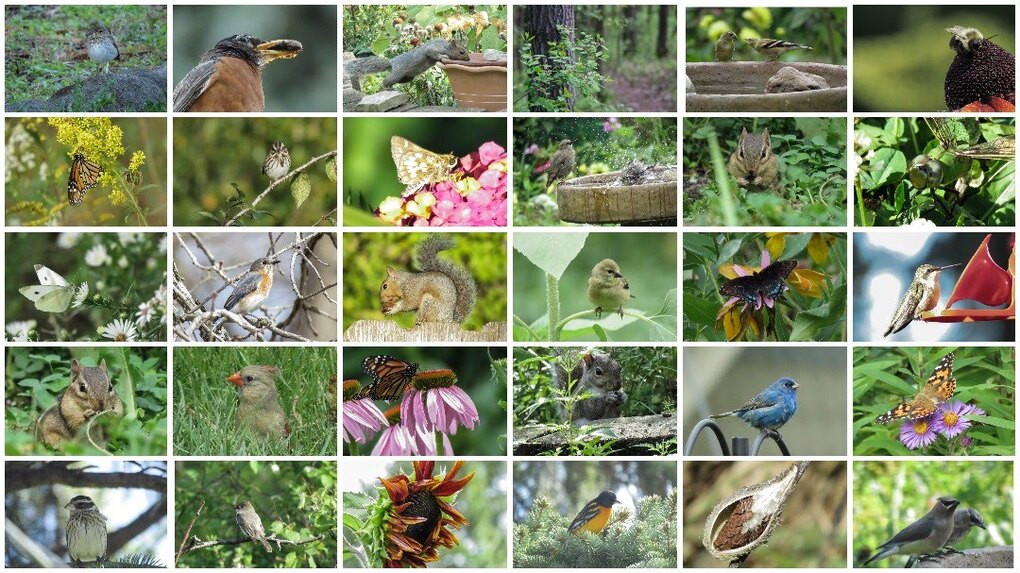
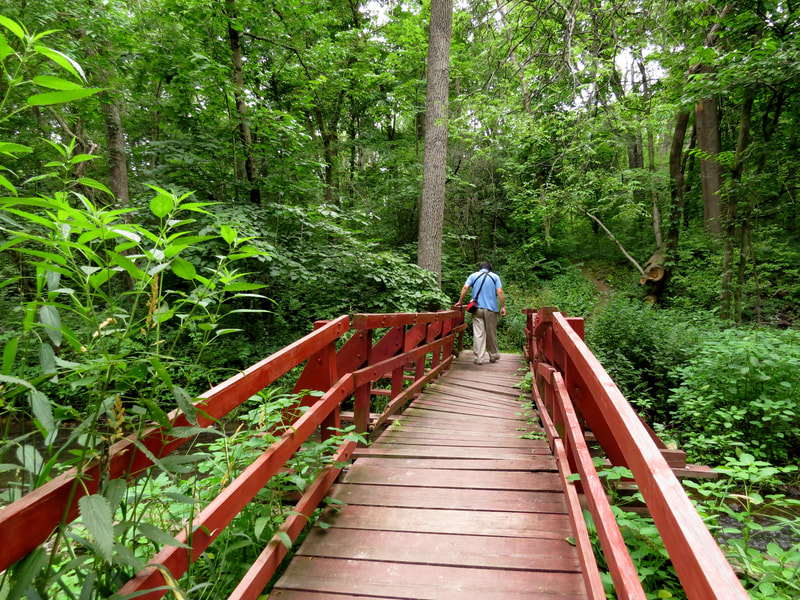
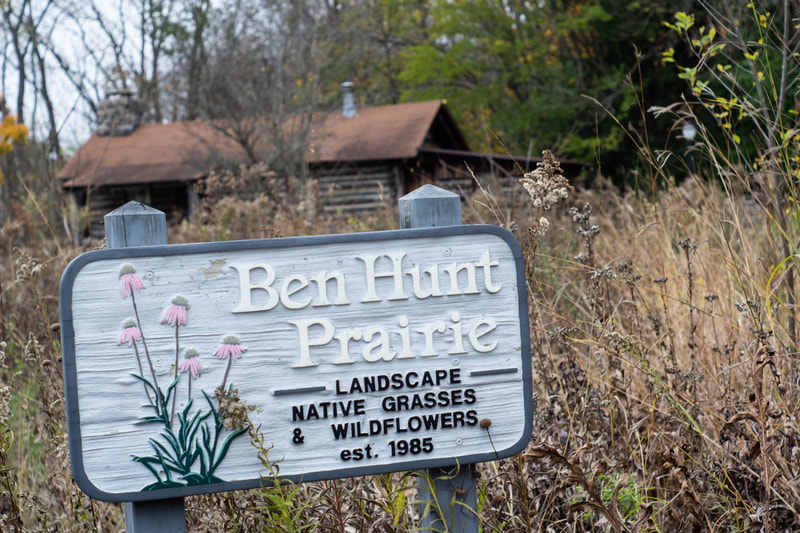
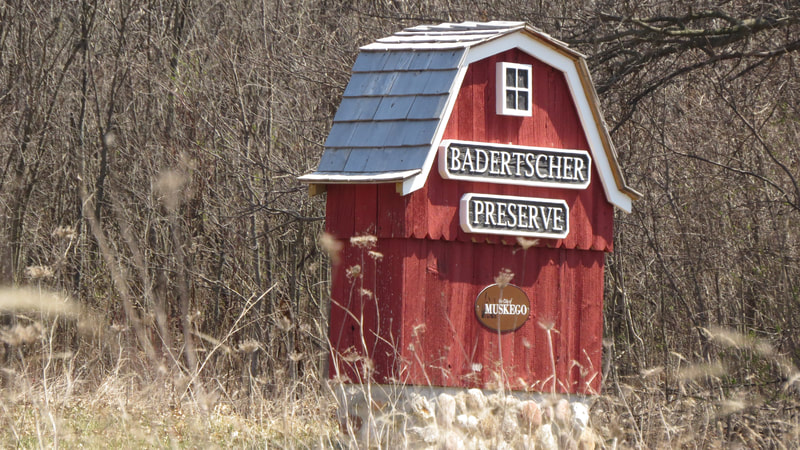
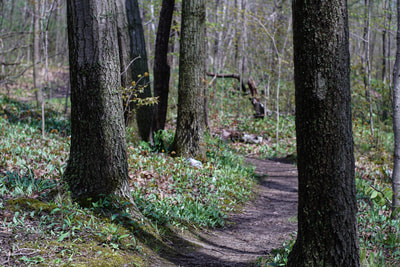
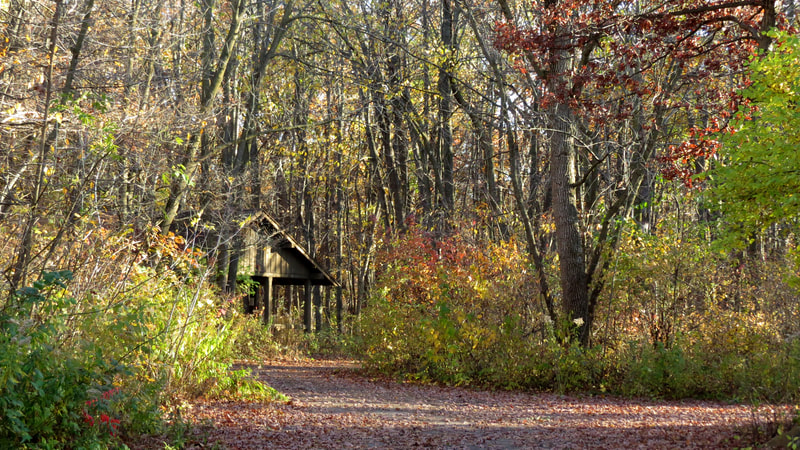
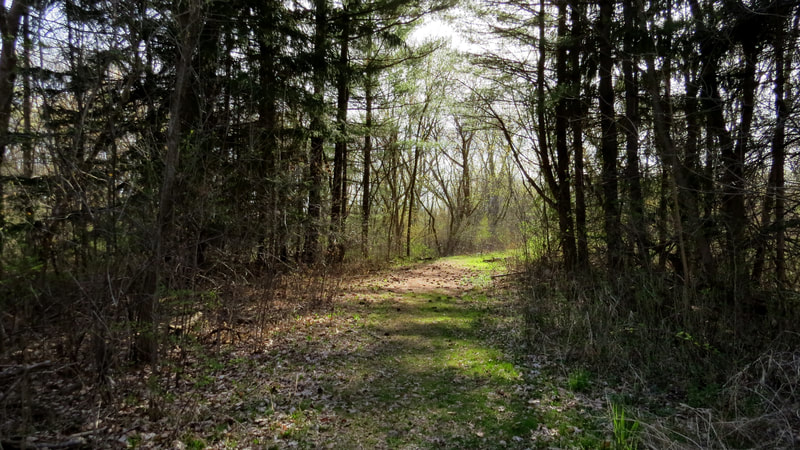
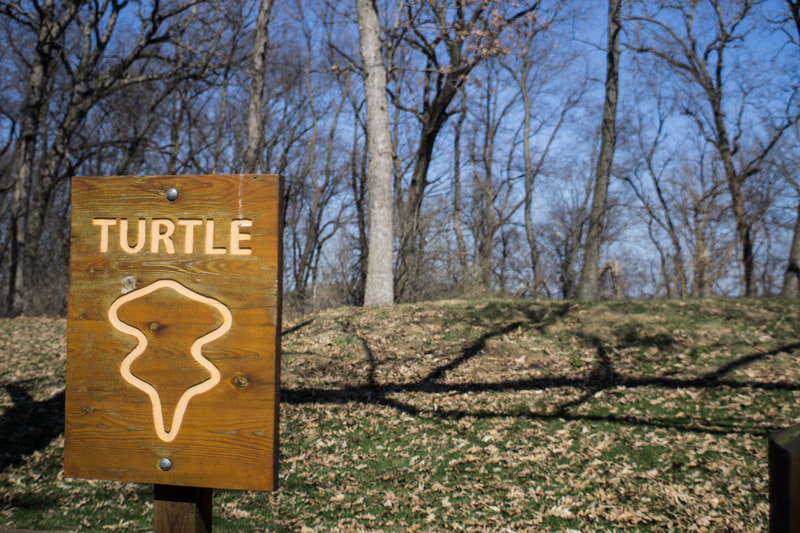
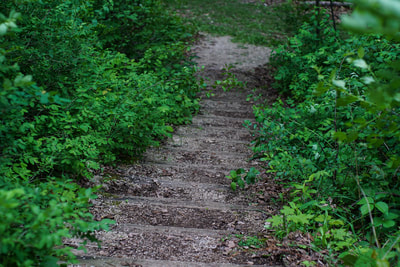
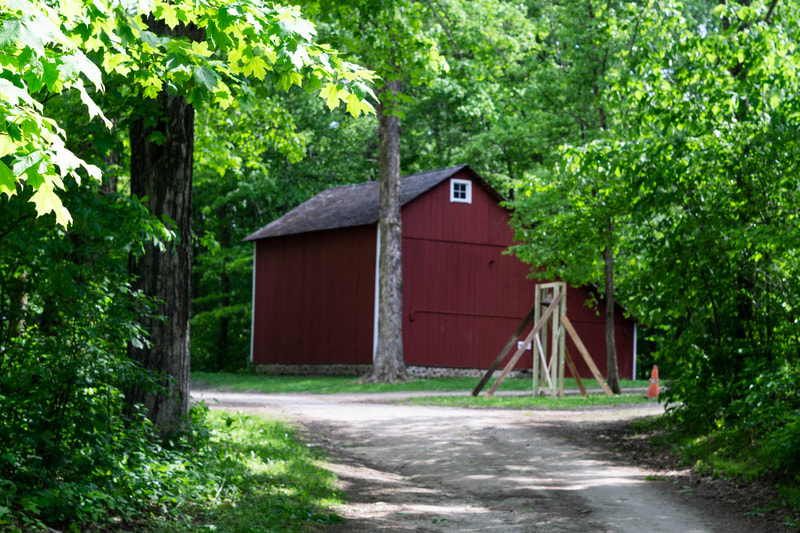
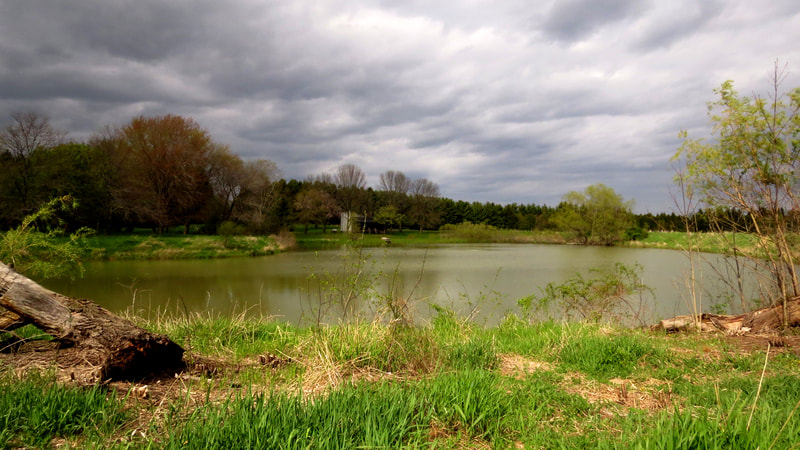
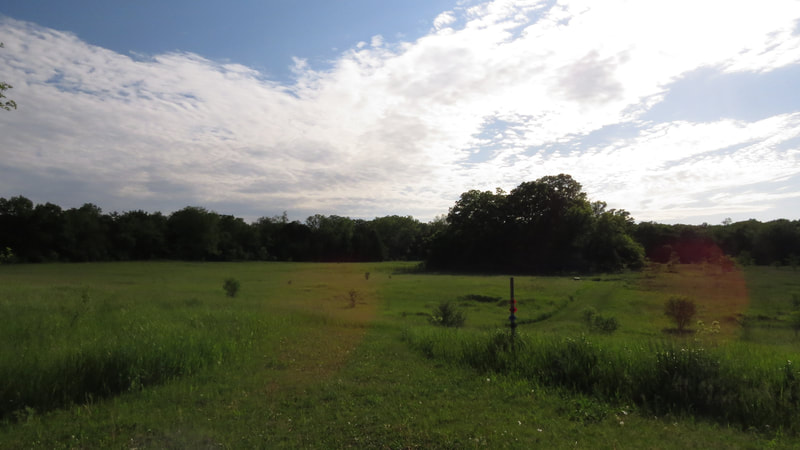
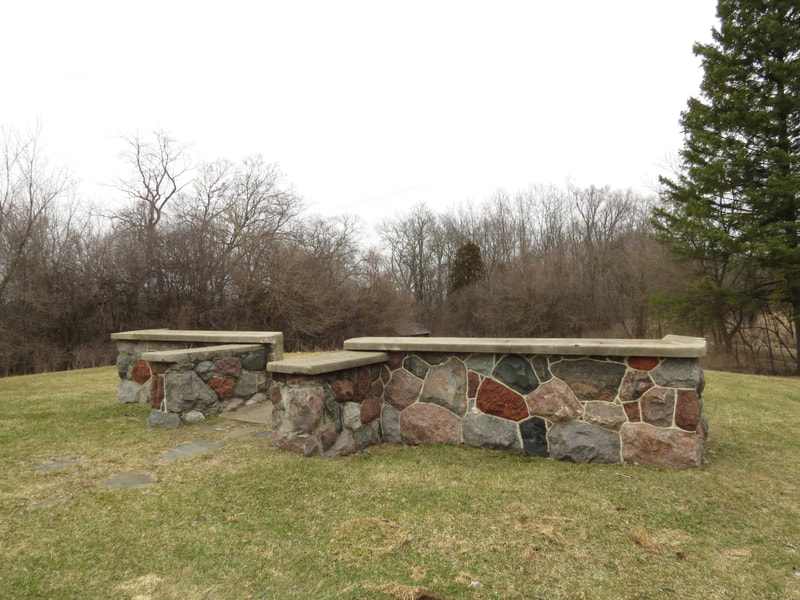
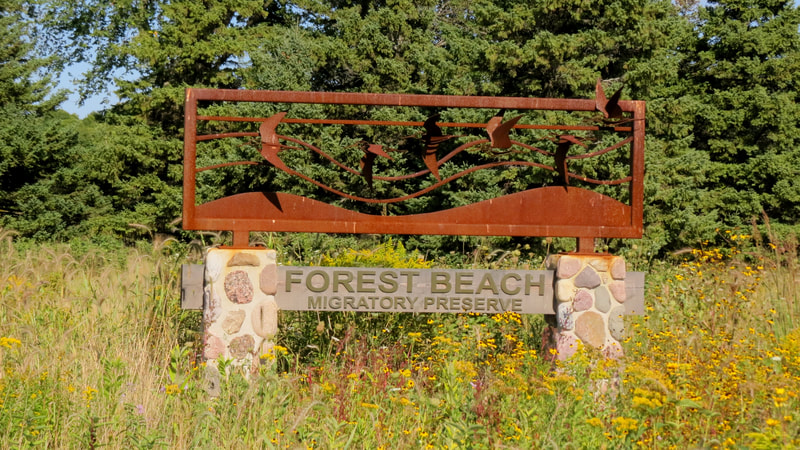
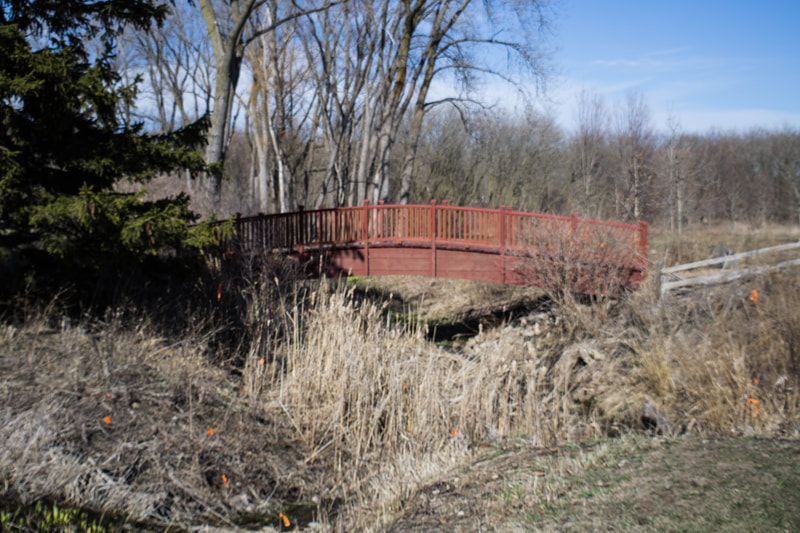
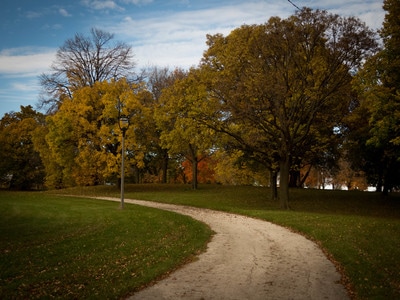
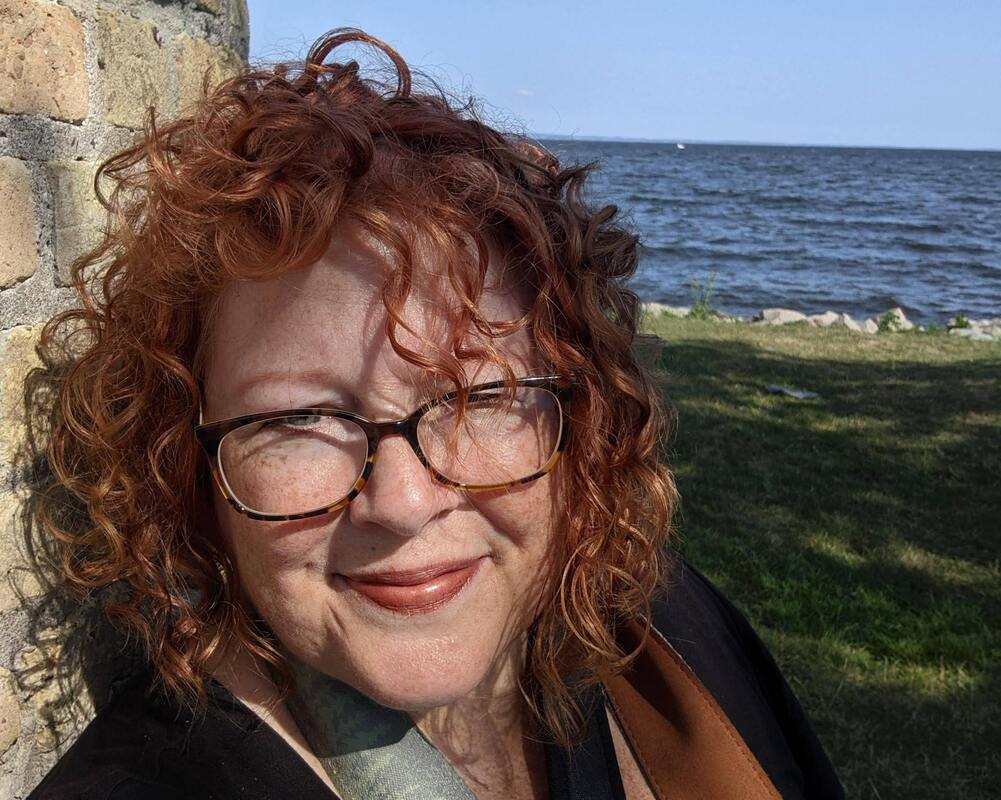
 RSS Feed
RSS Feed
